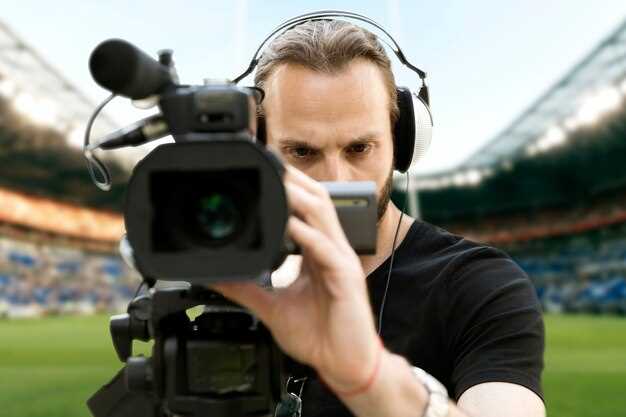
The evolution of media coverage in GT racing has significantly transformed the way fans and enthusiasts engage with the sport. In recent years, the integration of advanced technology and innovative broadcasting techniques has elevated the viewing experience, allowing audiences to gain deeper insights into both the action on the track and the strategic elements of the race.
Understanding the impact of media representation is crucial for both teams and sponsors, as it shapes public perception and influences fan loyalty. Through detailed analysis of GT race coverage, we can identify key trends in how stories are told, which platforms dominate viewership, and the effectiveness of various communication strategies in reaching target demographics.
Furthermore, the role of social media has become paramount in GT racing, providing real-time updates and fostering an interactive dialogue between fans and the sport. The ability to share highlights, interviews, and behind-the-scenes content has enabled teams to cultivate a more personal connection with their audience, ultimately enhancing the overall media landscape of GT racing.
Analyzing Viewer Engagement Metrics in Live Broadcasts

In the realm of broadcasting, understanding viewer engagement metrics is crucial for optimizing content delivery and enhancing audience experiences. Viewer engagement metrics offer insights into how audiences interact with live broadcasts, revealing trends that can inform future programming and marketing strategies.
Key indicators like viewership duration, peak audience numbers, and interaction rates provide valuable data. The average watch time can indicate viewers’ investment in the content, while peak numbers highlight moments of high interest, often triggered by critical events during the race, such as overtakes or pit stops.
Another vital component of viewer engagement is the interaction rate, encompassing comments, shares, and reactions on social media platforms during the broadcast. These interactions serve as real-time feedback, showcasing how viewers feel about the content and their willingness to participate in the discussion. An analysis of these metrics allows broadcasters to adjust their strategies and create more compelling content that resonates with their audience.
Furthermore, integrating advanced analytics tools provides deeper insights into viewer demographics, preferences, and behavioral trends. This data can help in tailoring broadcasts to meet the expectations of different audience segments, ensuring higher retention rates and a more engaged viewer base.
In summary, by analyzing viewer engagement metrics during live broadcasts, media companies can not only enhance their current offerings but also build a more loyal audience over time. This iterative process of evaluation and adaptation is essential for thriving in the competitive landscape of live sports broadcasting.
Optimizing Content Delivery for Digital Platforms
As the landscape of media consumption continues to evolve, optimizing content delivery for digital platforms has become essential for engaging audiences effectively during GT race coverage. Emphasizing broadcasting quality and accessibility ensures that fans receive timely and relevant information, enhancing their overall experience.
First and foremost, leveraging a multi-platform strategy is critical. By distributing content across various digital channels–such as social media, streaming services, and official websites–broadcasters can reach a wider audience. This approach allows for real-time updates and highlights, keeping viewers informed even while they are on the go.
Moreover, implementing adaptive bitrate streaming technology significantly improves content delivery. This technology adjusts the quality of the broadcast according to the viewer’s internet speed, ensuring a seamless experience without interruptions. High-quality visuals and audio are paramount in maintaining viewer engagement during live events.
Content personalization also plays a vital role in optimizing delivery. Utilizing viewer data analytics, broadcasters can tailor content to individual preferences, highlighting specific race details and team information that resonate with different segments of the audience. This customized approach not only fosters viewer loyalty but also enriches their connection to the sport.
In addition, integrating interactive features, such as live chats and polls, enhances viewer engagement. Audiences can participate in discussions or contribute their opinions in real-time, transforming passive viewing into an interactive experience. Such features create a community atmosphere, elevating the overall enjoyment of GT race coverage.
Lastly, ensuring mobile optimization is imperative, given the increasing number of fans consuming content on smartphones and tablets. Responsive design and user-friendly interfaces can significantly enhance the accessibility of live broadcasts and supplementary content, catering to the preferences of on-the-go viewers.
In conclusion, optimizing content delivery for digital platforms involves a multifaceted strategy that includes diverse distribution channels, advanced technology, personalization, interactivity, and mobile access. By focusing on these elements, broadcasters can not only enhance the viewing experience but also build a robust connection with their audience, ultimately fostering loyalty and engagement.
Leveraging Social Media for Audience Interaction During Races

In the fast-paced environment of GT racing, social media serves as a pivotal platform for enhancing audience interaction. By utilizing various media channels, race organizers and teams can engage fans in real-time, fostering a sense of community among spectators both at the track and online.
During races, live updates on platforms like Twitter and Instagram provide fans with instant insights into race progress, driver performances, and key events. This immediacy allows audiences to stay connected with the action, creating an engaging narrative that keeps them invested in the race.
Moreover, interactive content such as polls, quizzes, and live Q&A sessions on social media can further enhance viewer engagement. Fans are encouraged to share their opinions and predictions, making them feel like active participants in the racing experience rather than passive observers.
Using hashtags related to specific events enables fans to easily follow conversations and join discussions with fellow enthusiasts. This aggregation of content helps in building a vibrant online community, where fans can express their excitement, analyze performances, and celebrate their favorite teams and drivers.
Additionally, platforms like TikTok have emerged as innovative spaces for creative media presentations. Short video clips showcasing race highlights, behind-the-scenes moments, and fan interactions can quickly go viral, significantly amplifying audience engagement and driving interest in upcoming events.
In summary, leveraging social media for audience interaction during races not only enhances the viewer experience but also builds a loyal fan base. By embracing real-time communication and interactive elements, racing organizations can effectively enhance their media strategy and create lasting connections with their audience.













